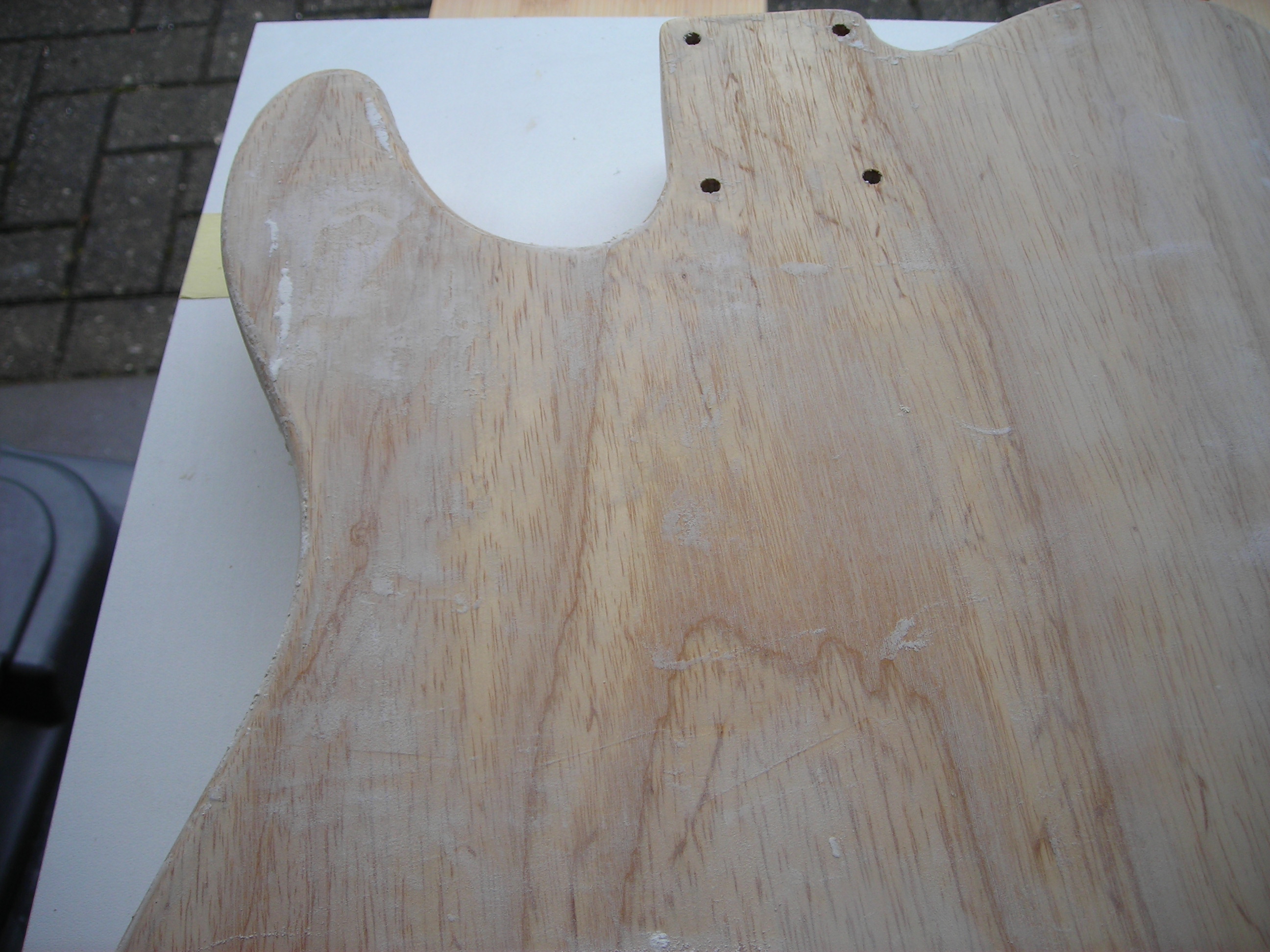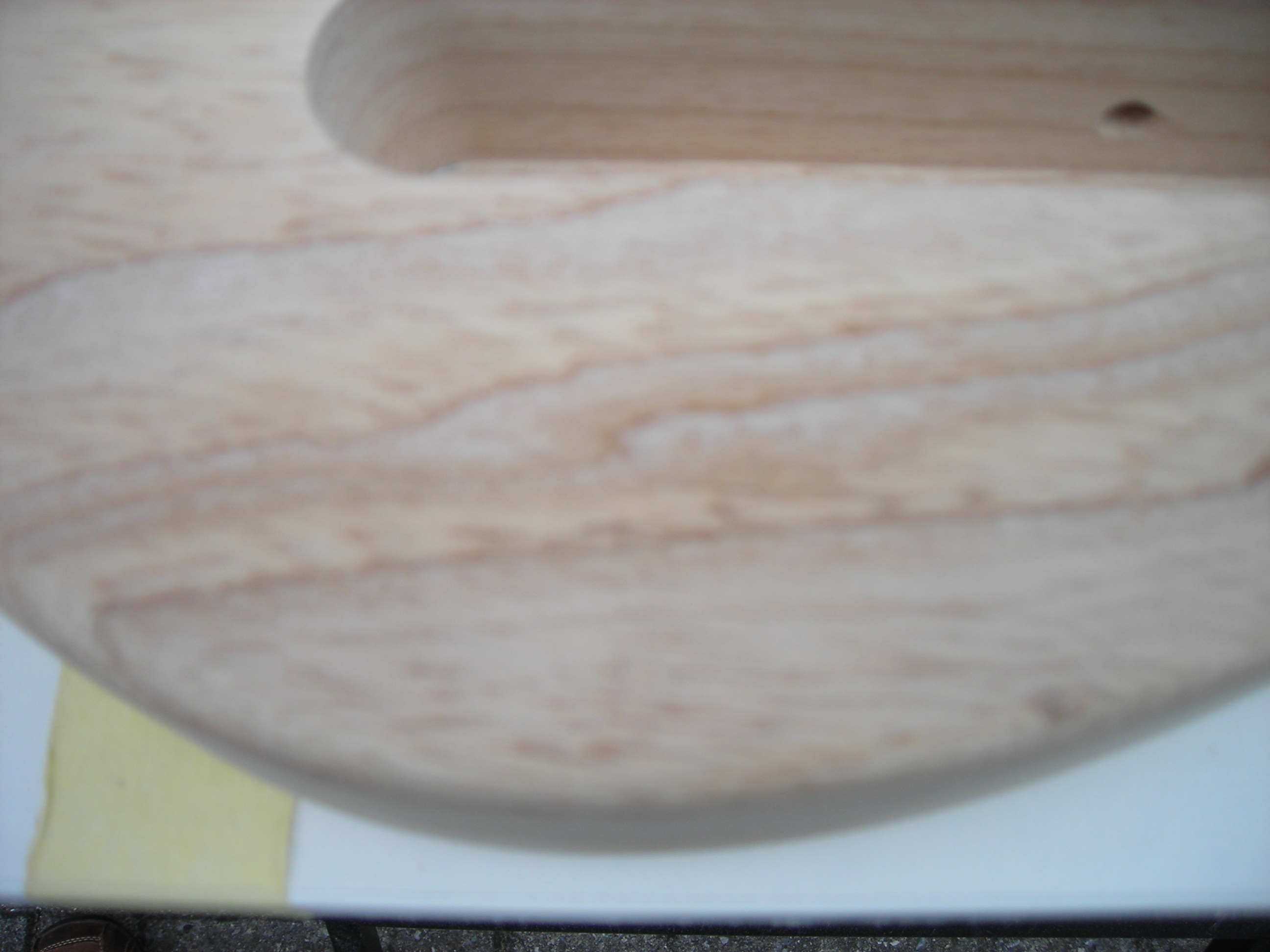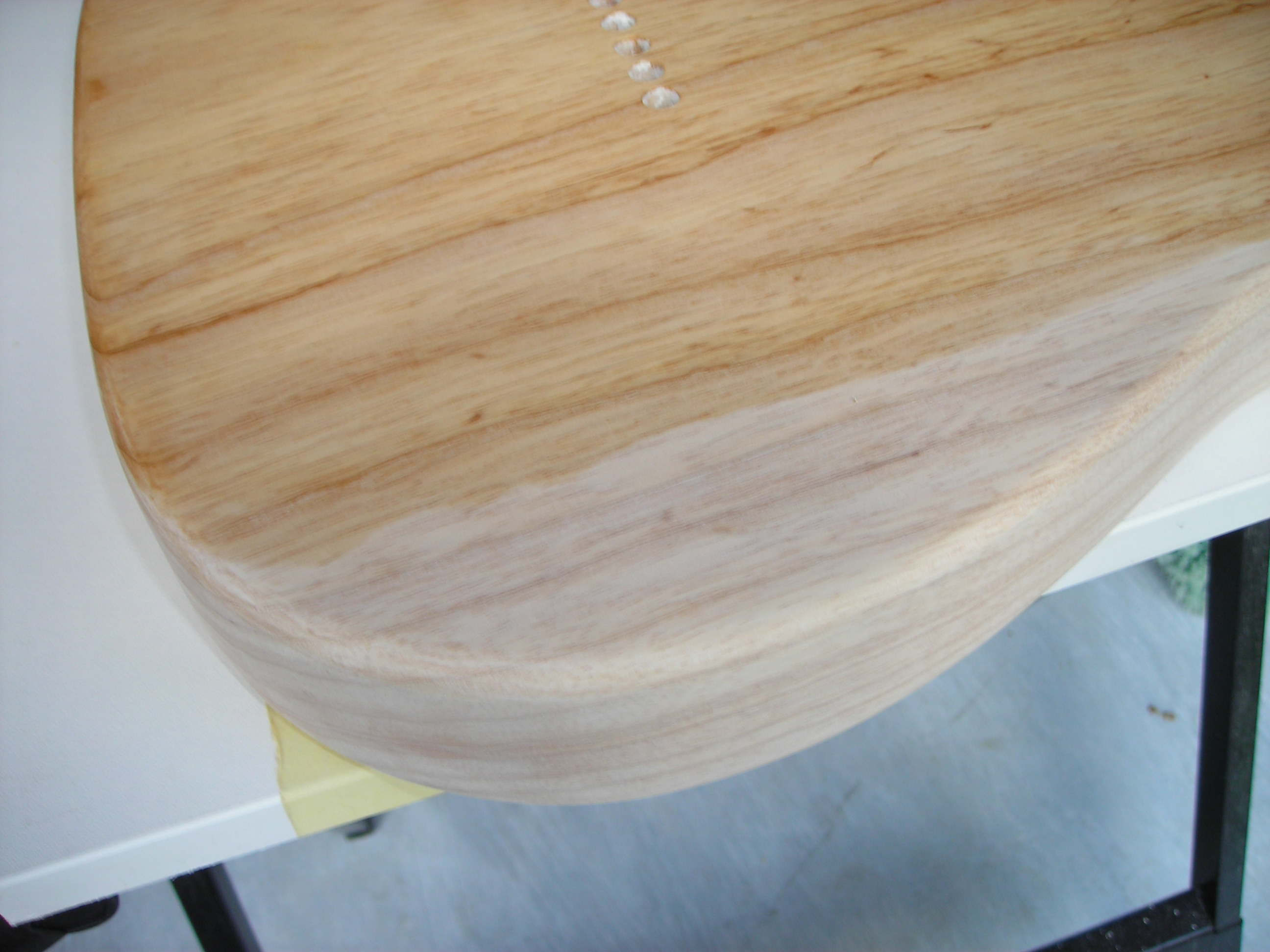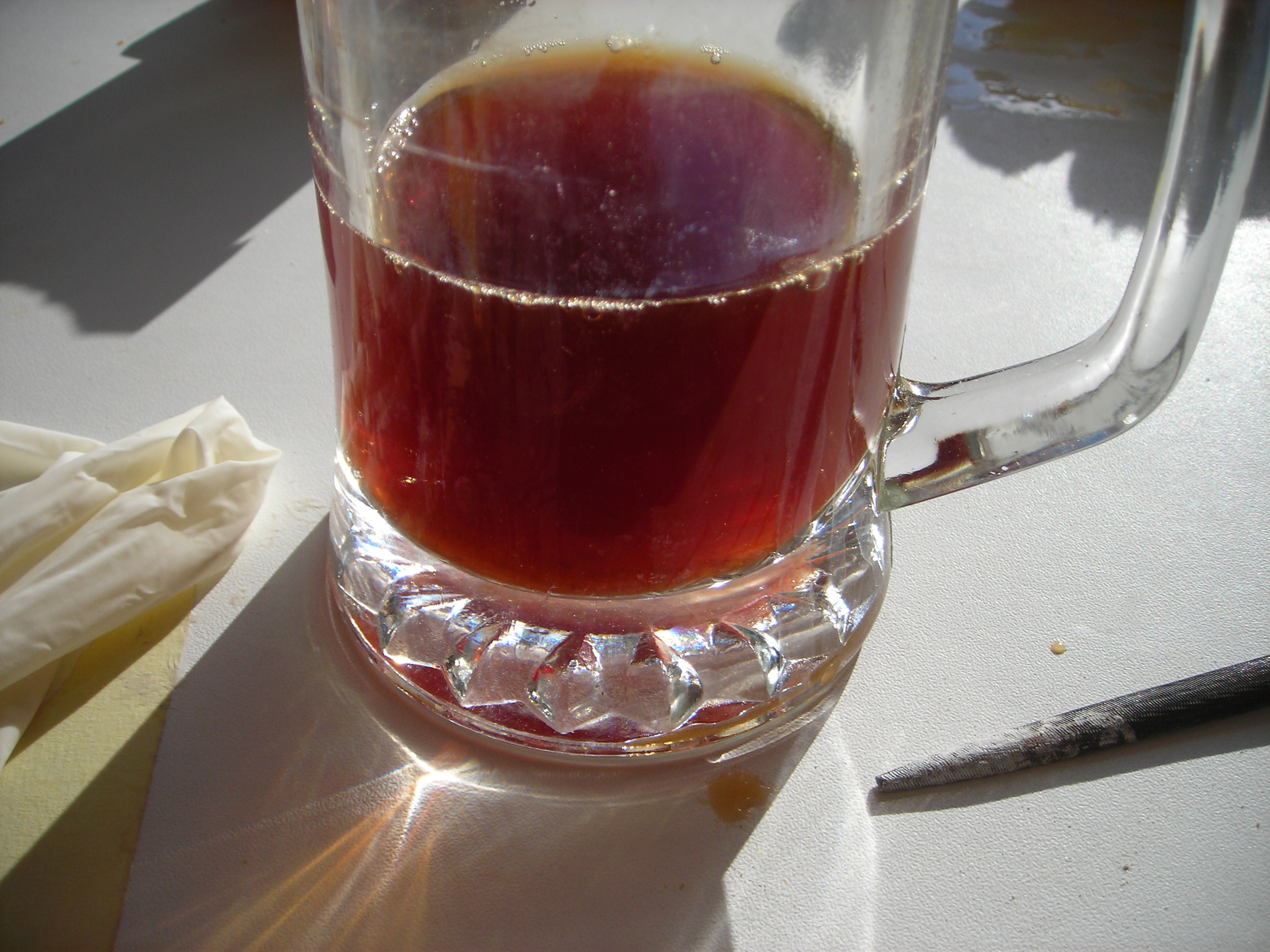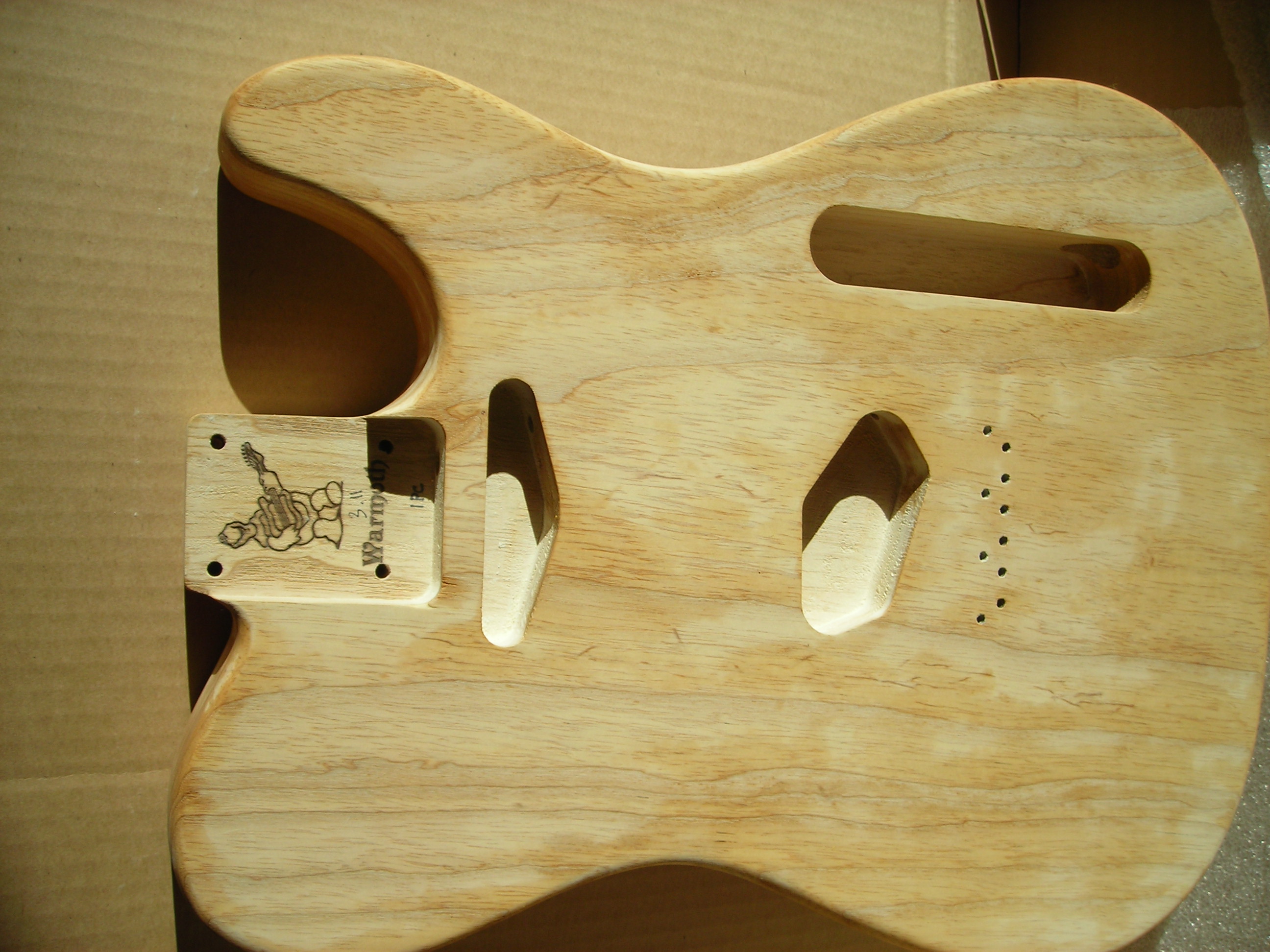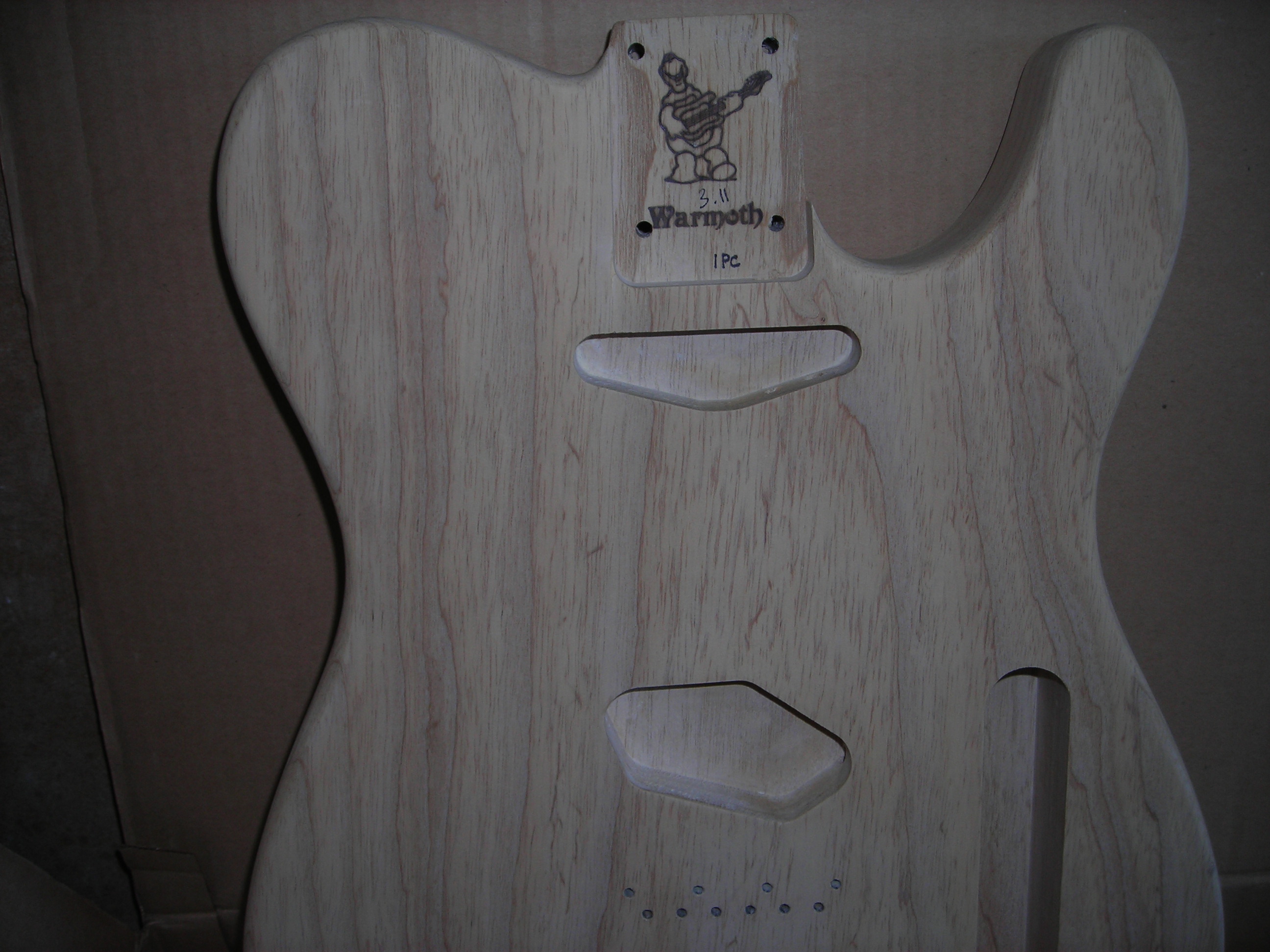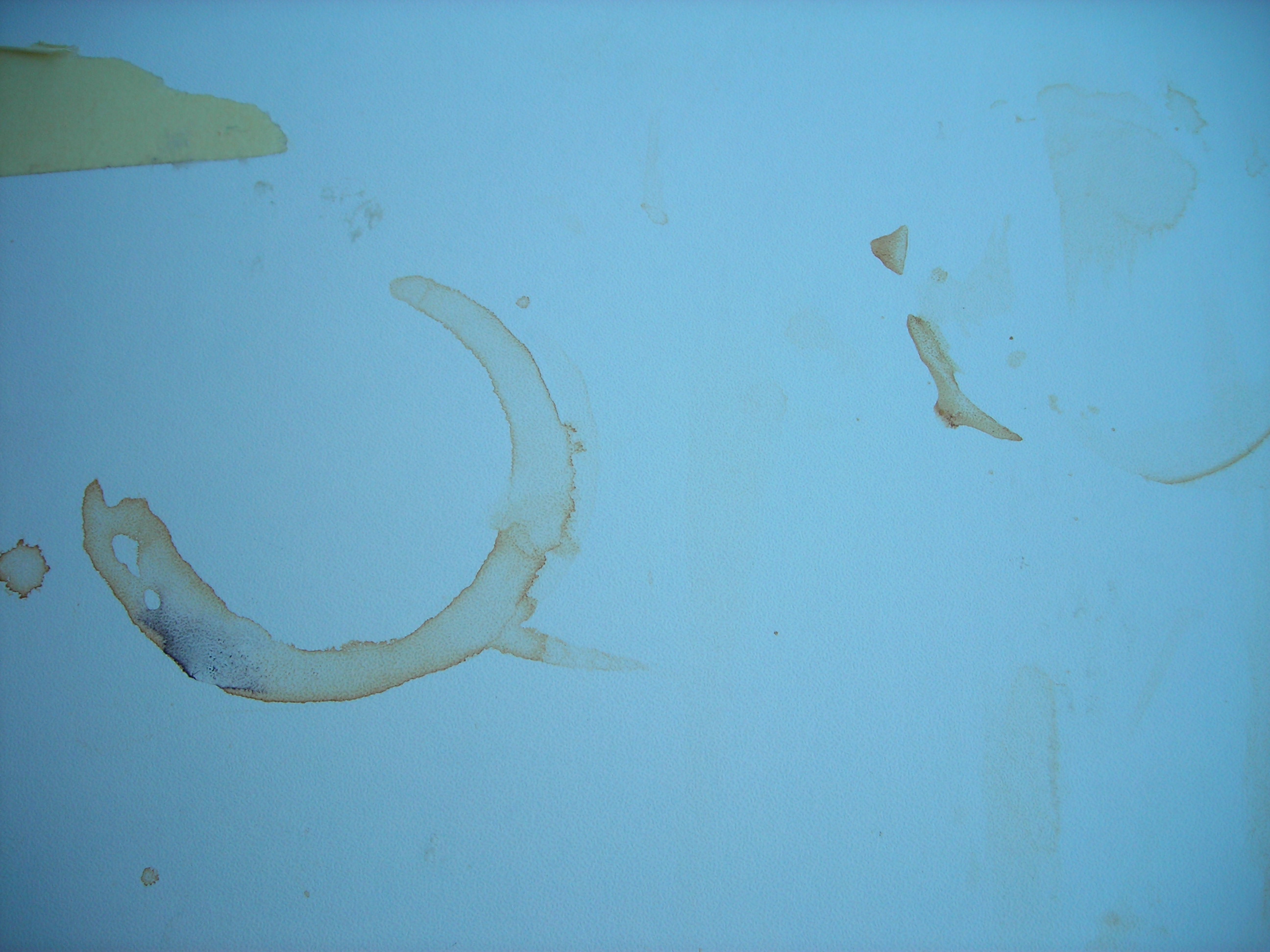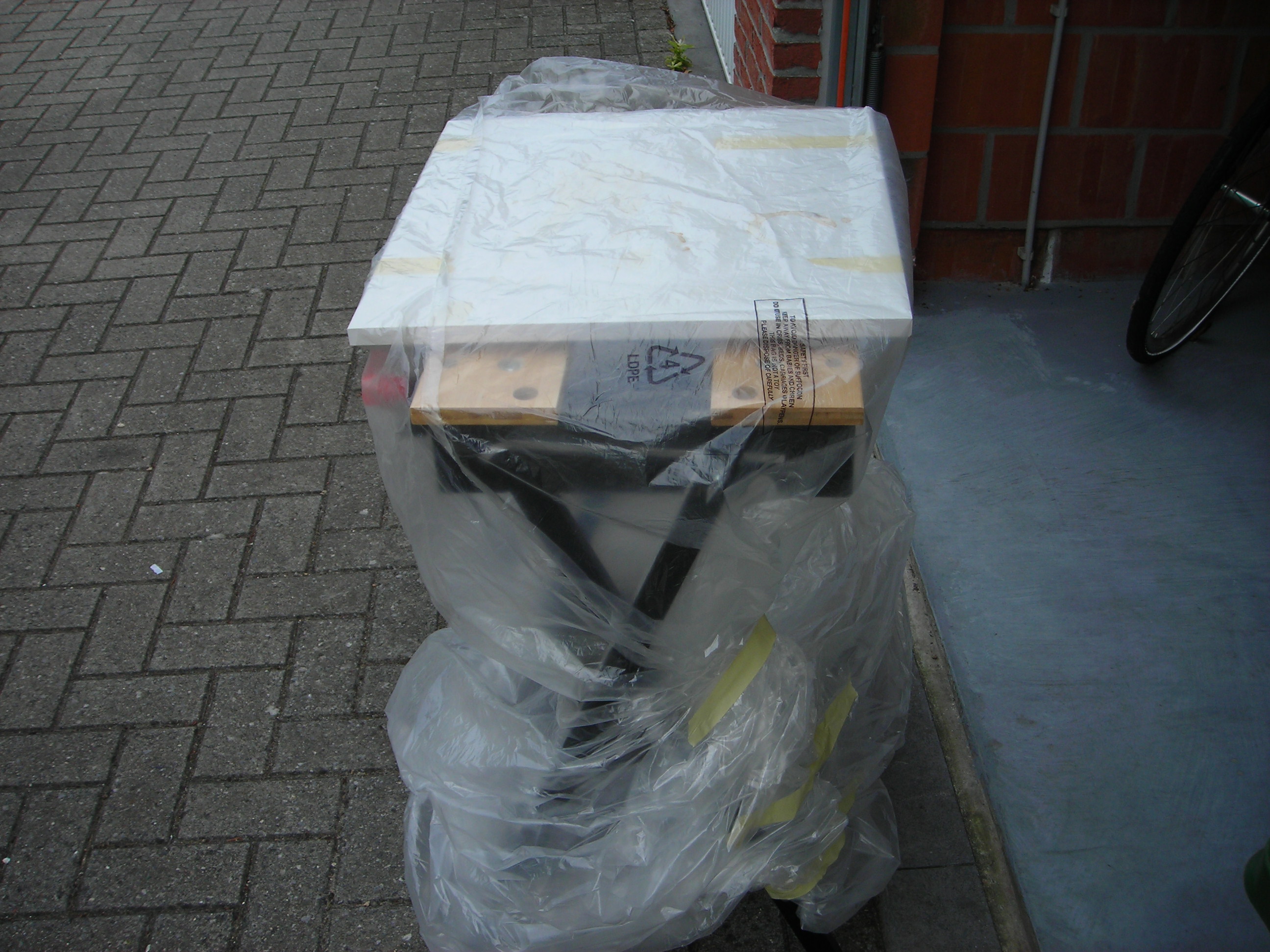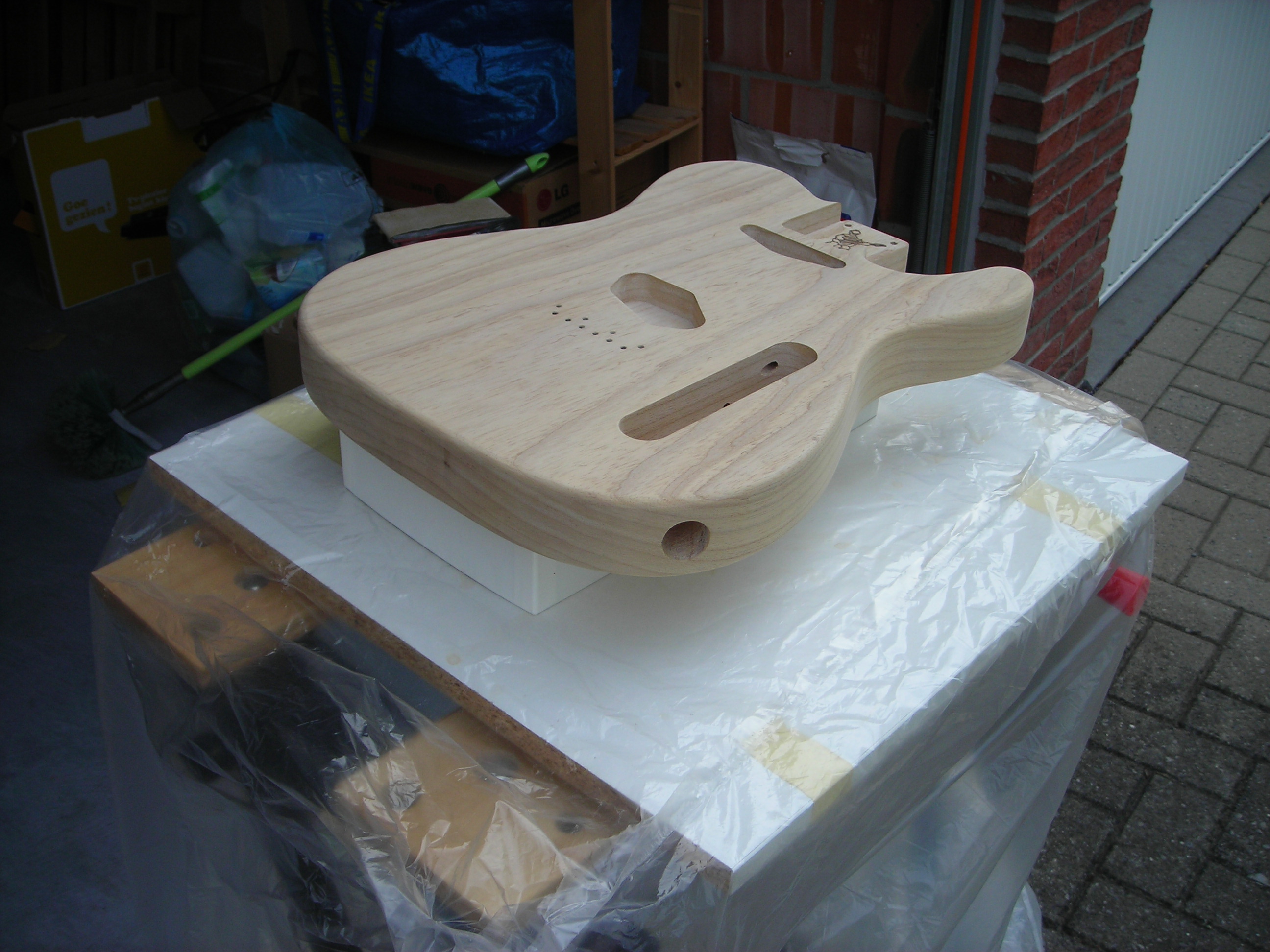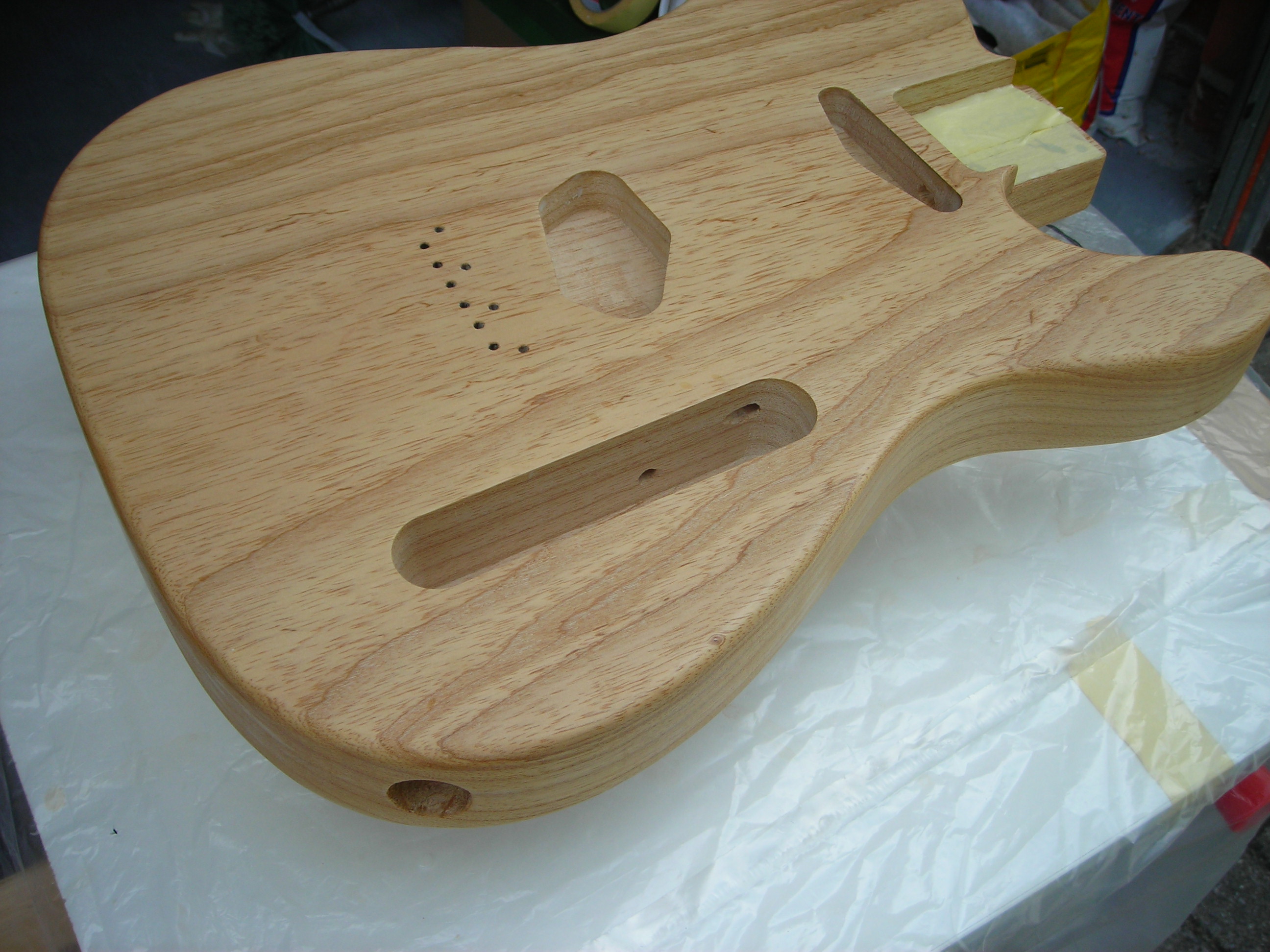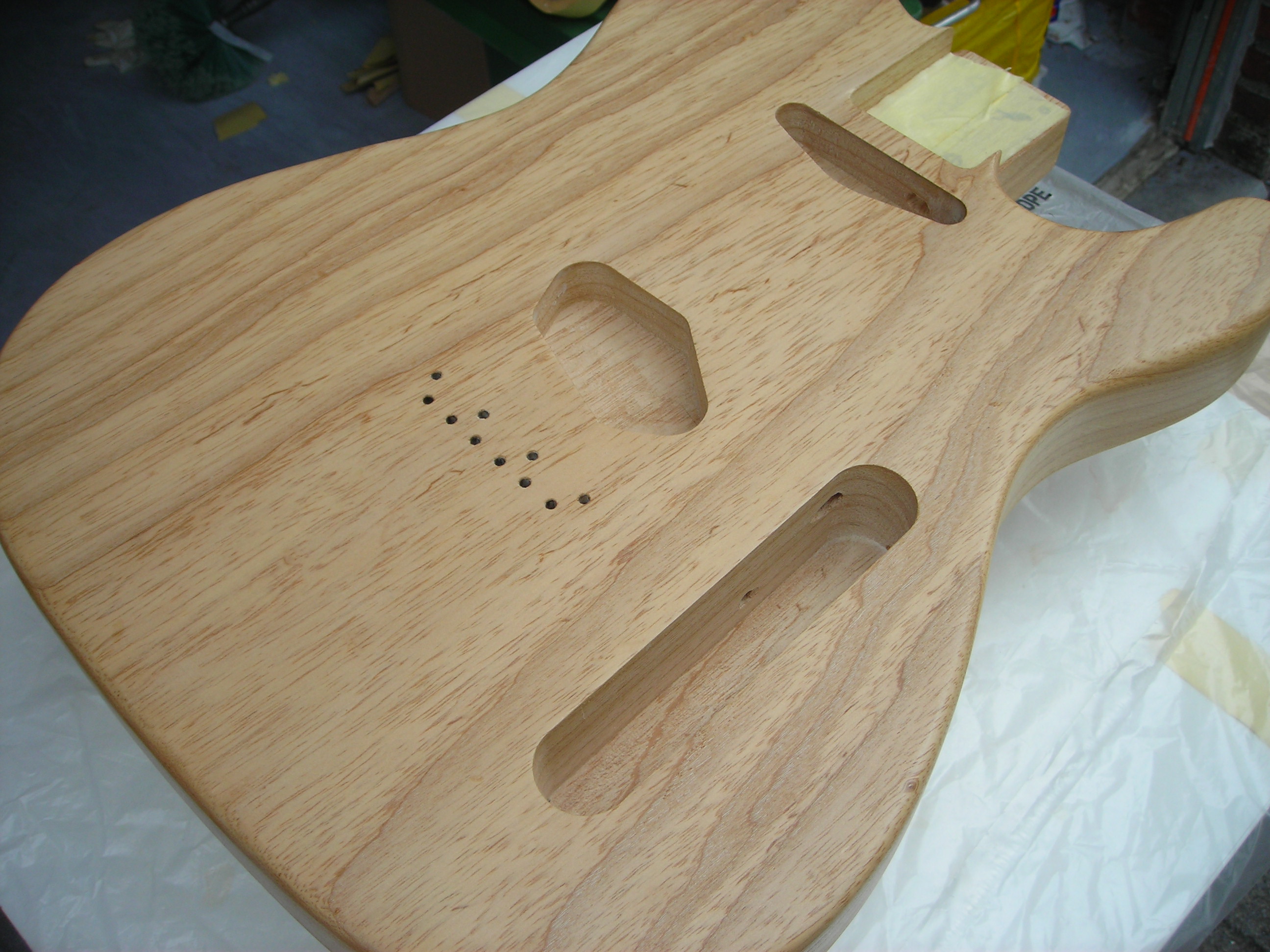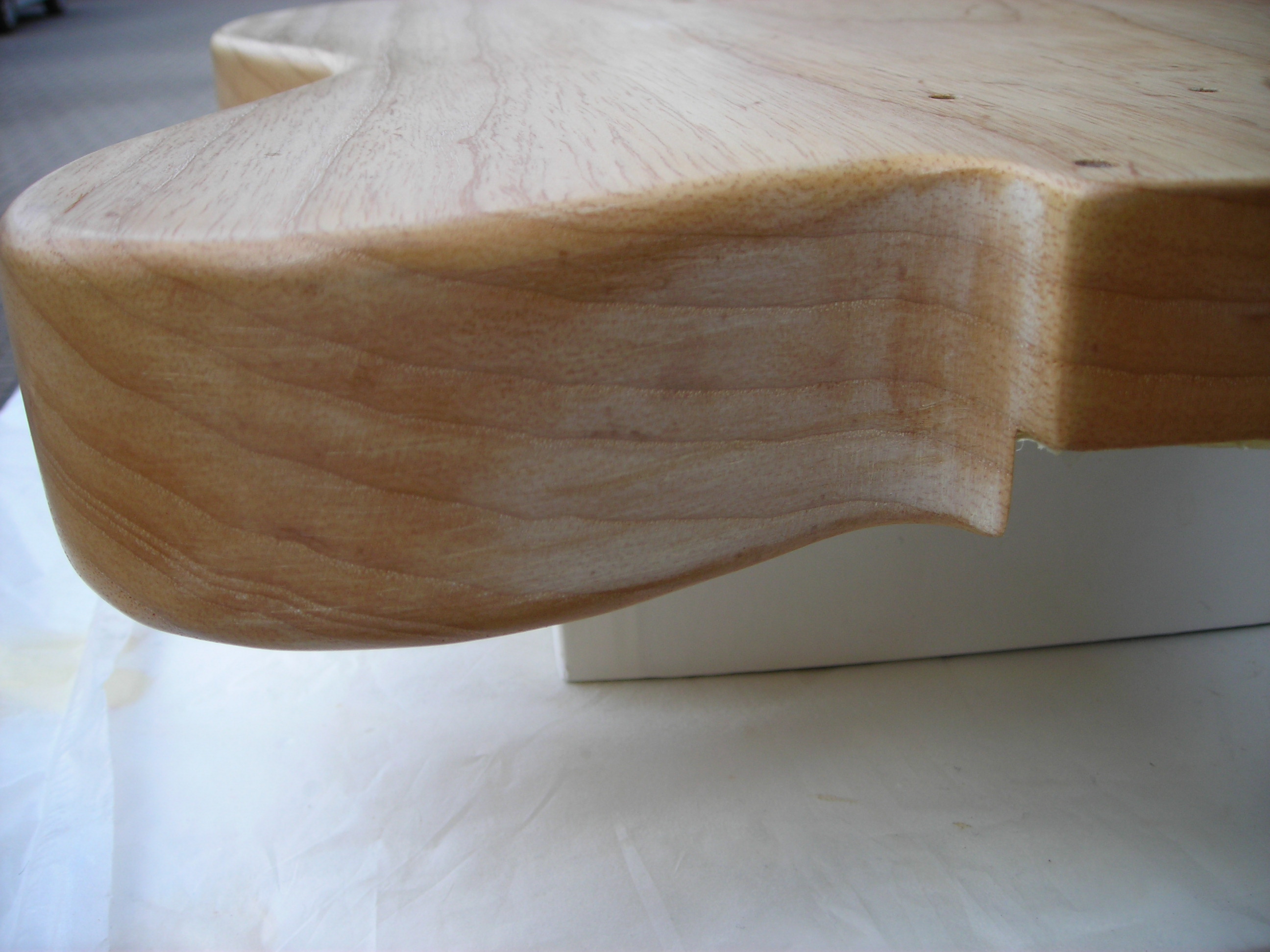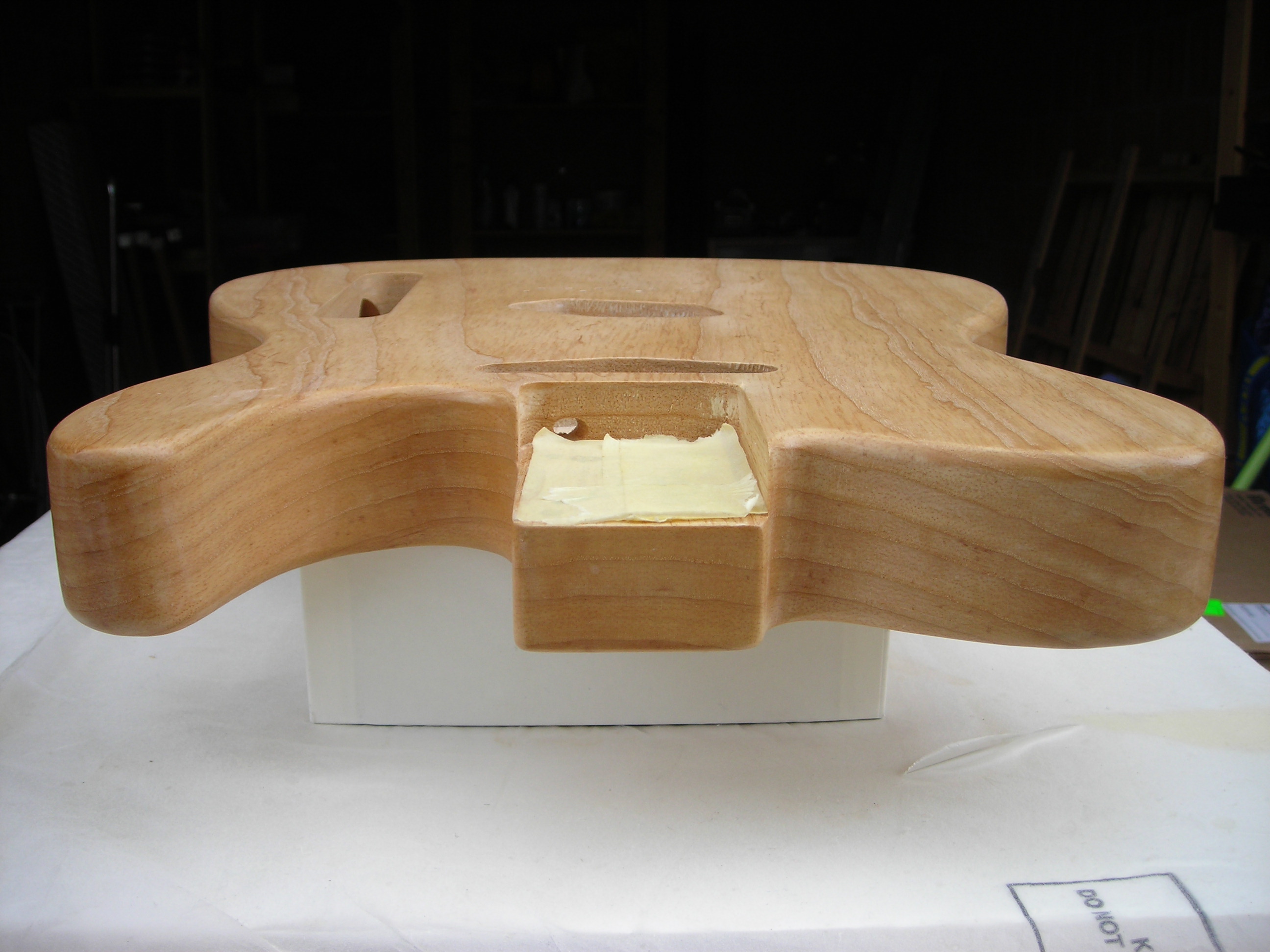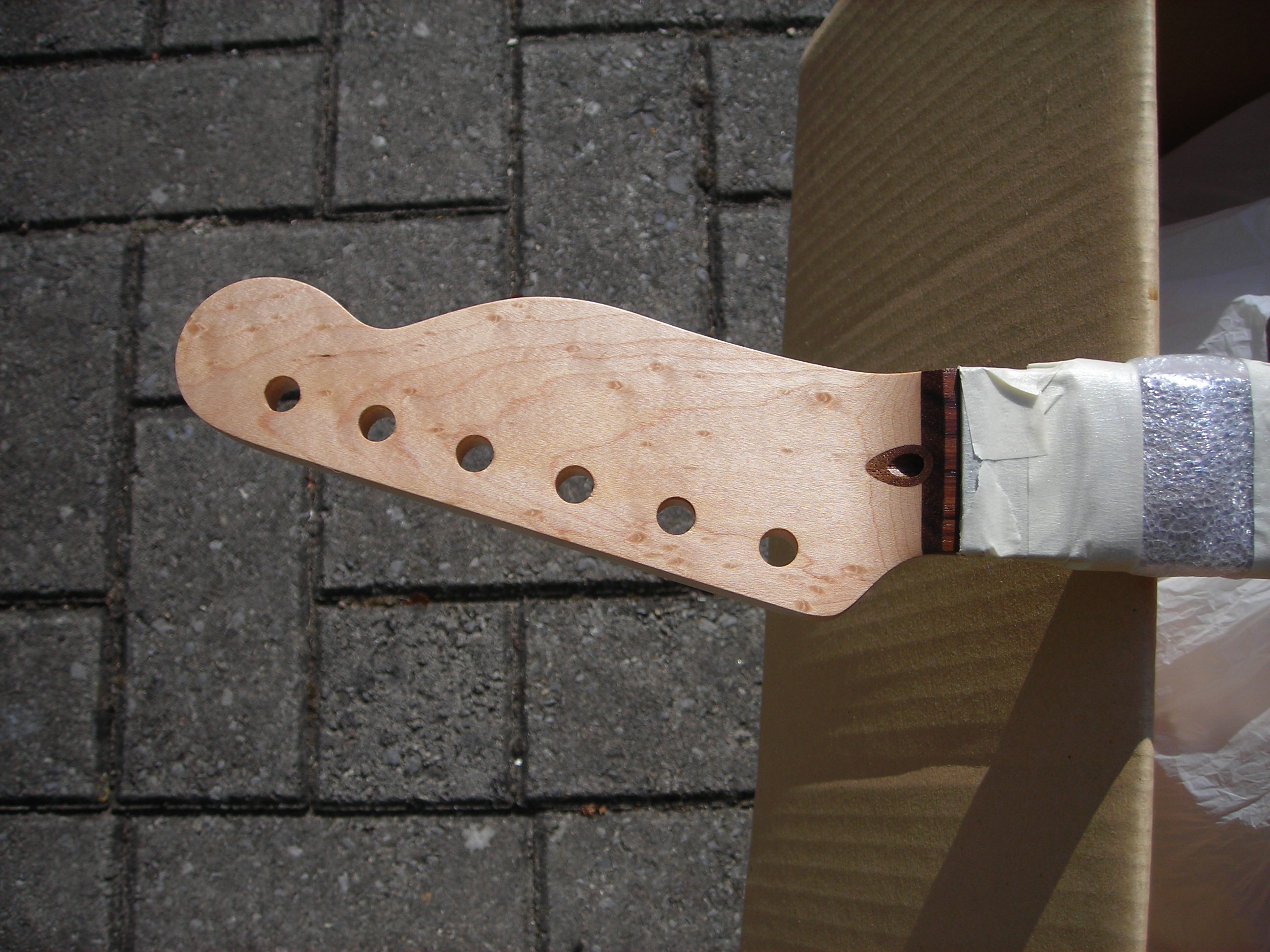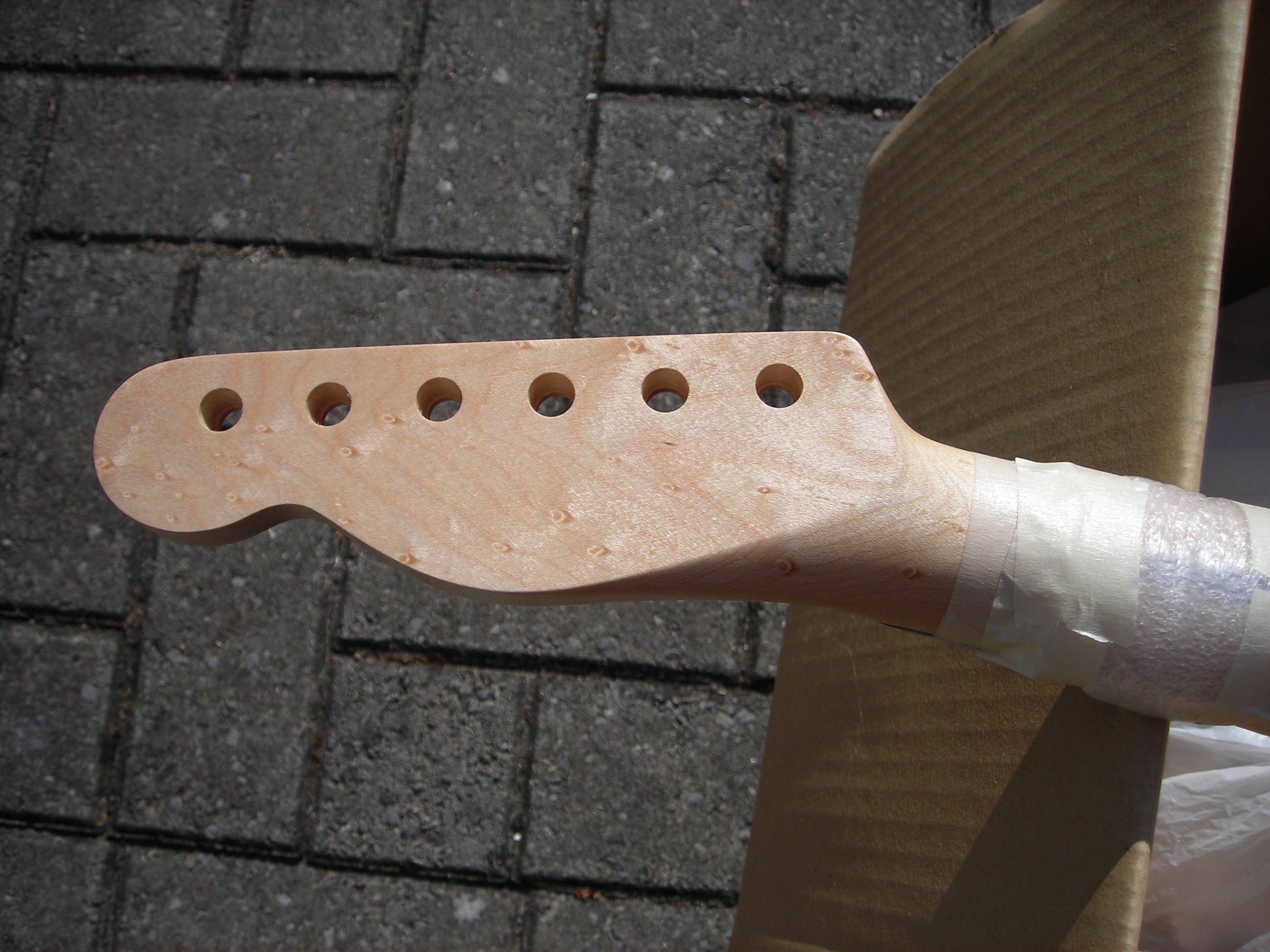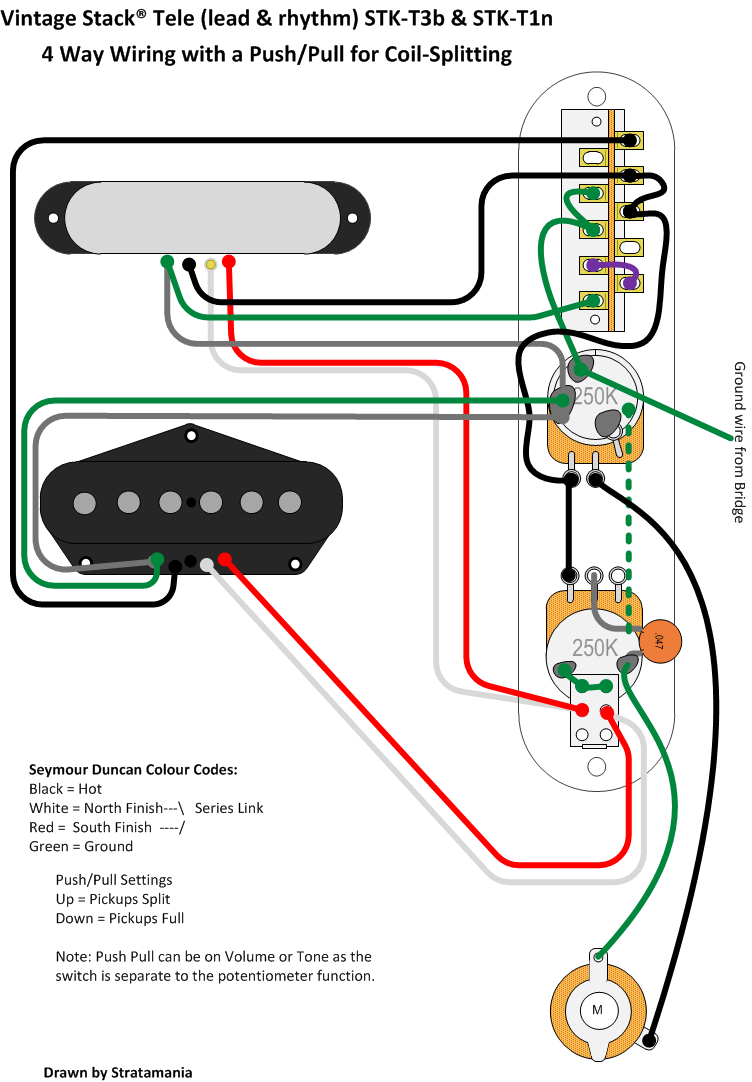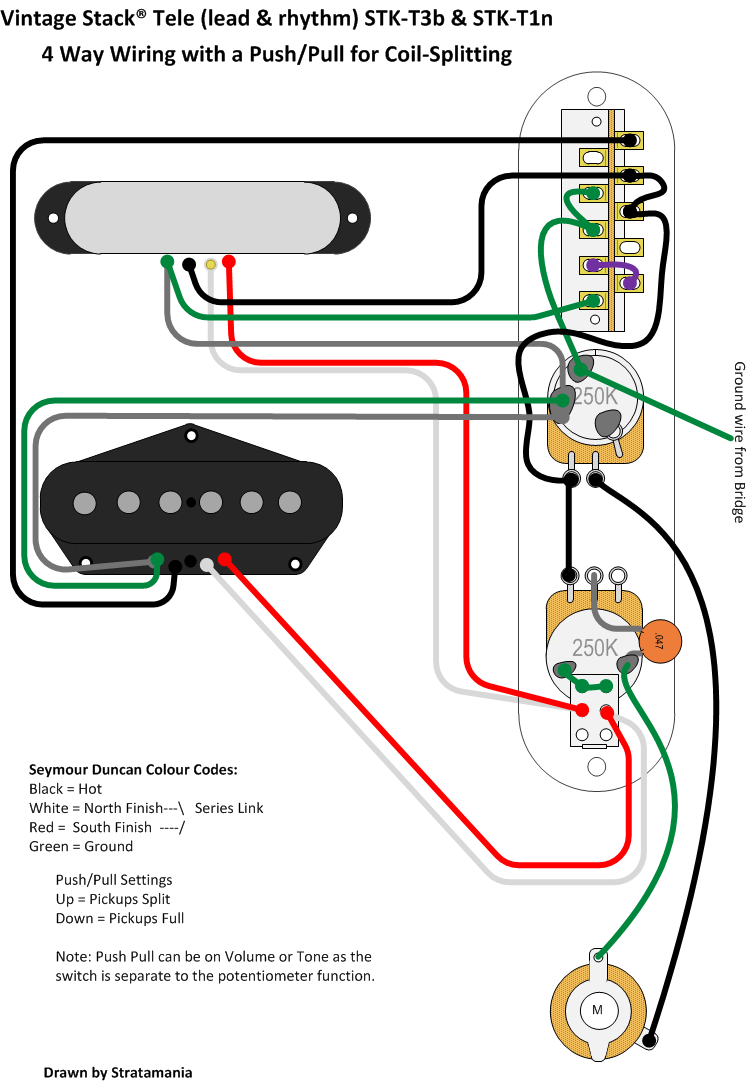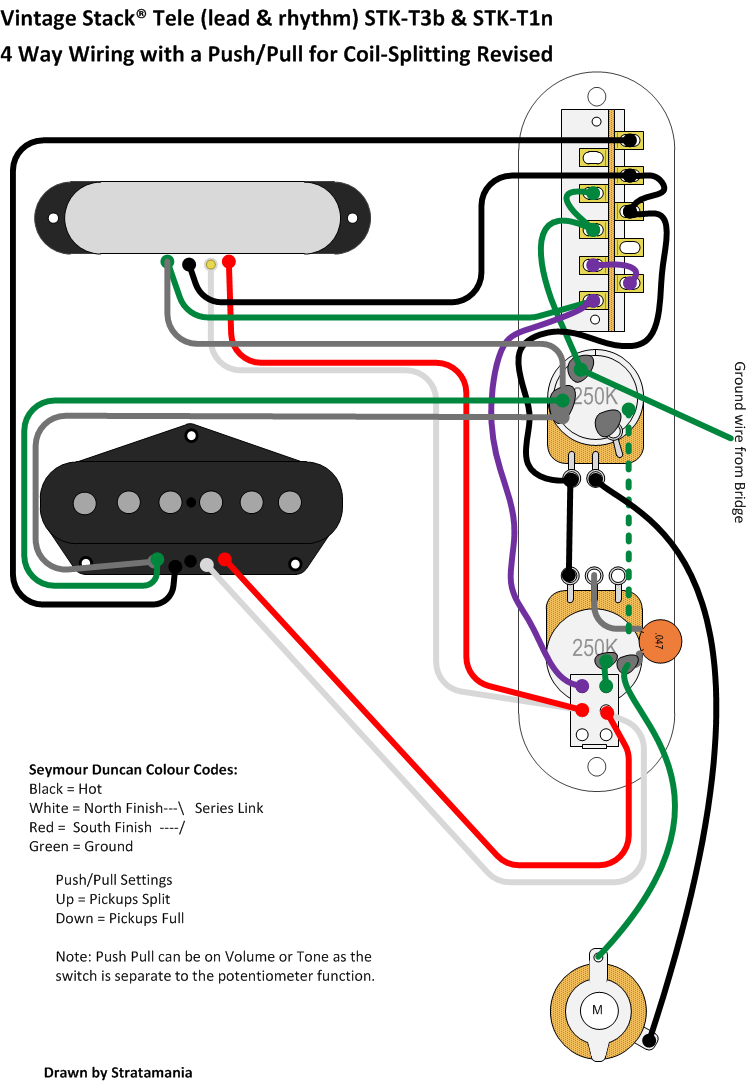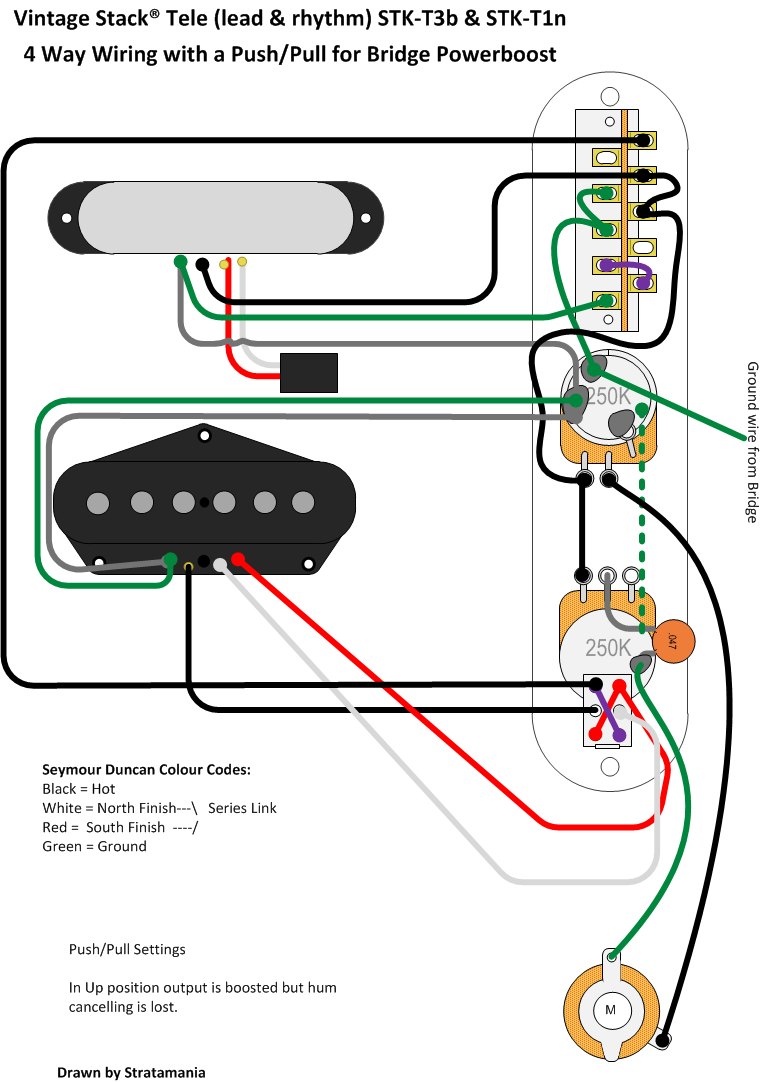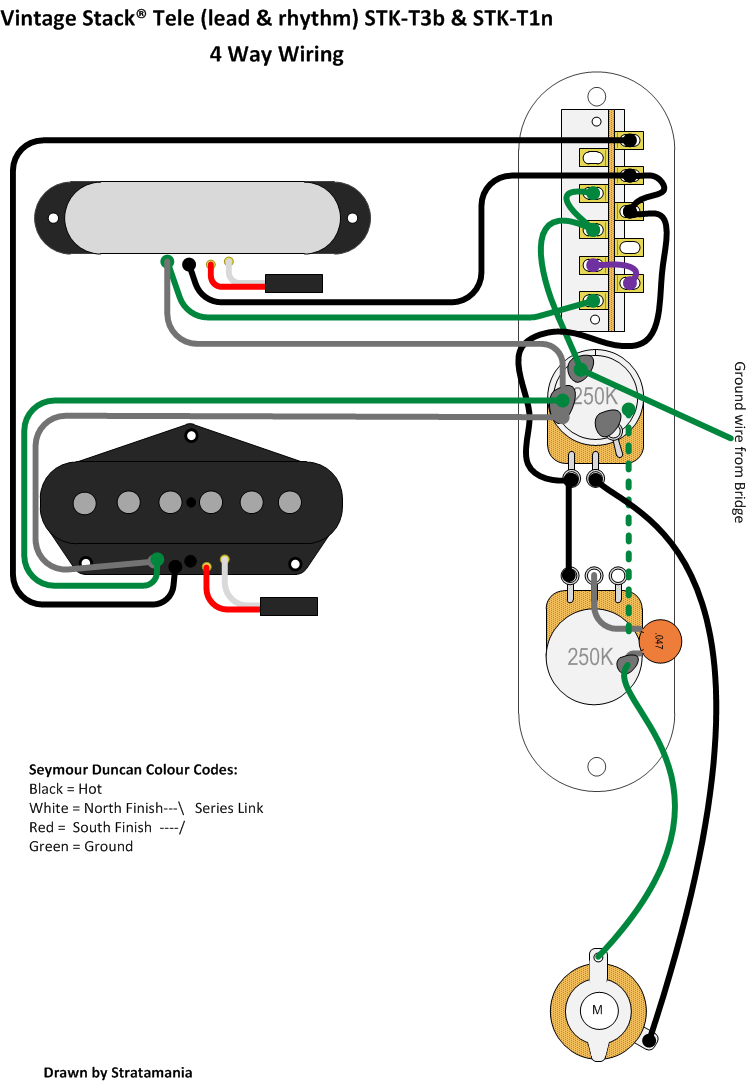stratamania
Mythical Status
- Messages
- 12,165
If you saw the out of the box thread yesterday the discussions of tea and a T type guitar continues in this work in progress diary thread. I will try and give some tips as I go so it may be useful to someone at some point.
Here is the out of the box thread for reference... https://unofficialwarmoth.com/threads/time-for-tea.23713/
First up is grain filling. Just prior to that I gave the body a quick once over with some 320 grit, for the most part it was already fine so did not need much work out of the box.
I have moved my workmate out to the garage as the weather now is OK for the most part for finish type work and also I need the air and don't want the stink in the living quarters.
Here's the tele body on a piece of wood left over from a kitchen cabinet taped to the workmate to give a surface to work on.
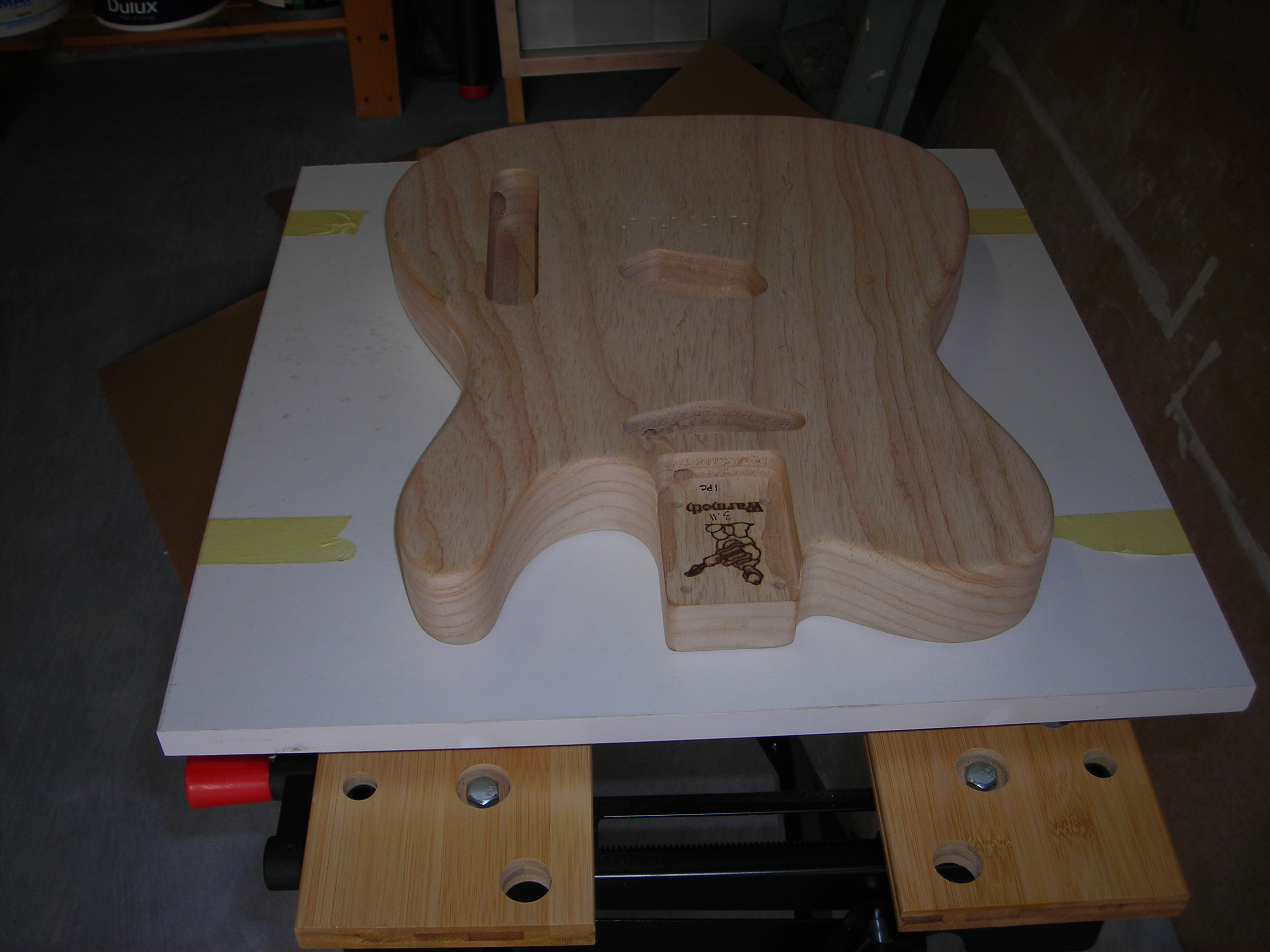 Grain_Fill_1 by stratamania, on Flickr
Grain_Fill_1 by stratamania, on Flickr
Finishing products were obtained from Rothko and Frost in the UK. Behlens were out of stock of some items when I went to order so I thought I would try R & Fs offerings.
Applying the thixotropic natural grain filler. Note the use of heavy duty rubber gloves. I also used a breathing filter mask thing. This stuff is not what you want in your lungs or all over your hands. Also advisable to work in a well ventilated area.
You stir it (the grain filler) to a creamy consistency and if needed it can be thinned with White spirit (alternate names: turpentine substitute or mineral spirit ) I didn't need to thin it but just gave it a good stir. You then apply it with a spreader type of tool, probably a shower type squeegee would do. I used an old screwdriver to get it out of the tin and then spread it with the grain to force it into the pores of the Ash. You go with the grain in order to force the filler into the open pores.
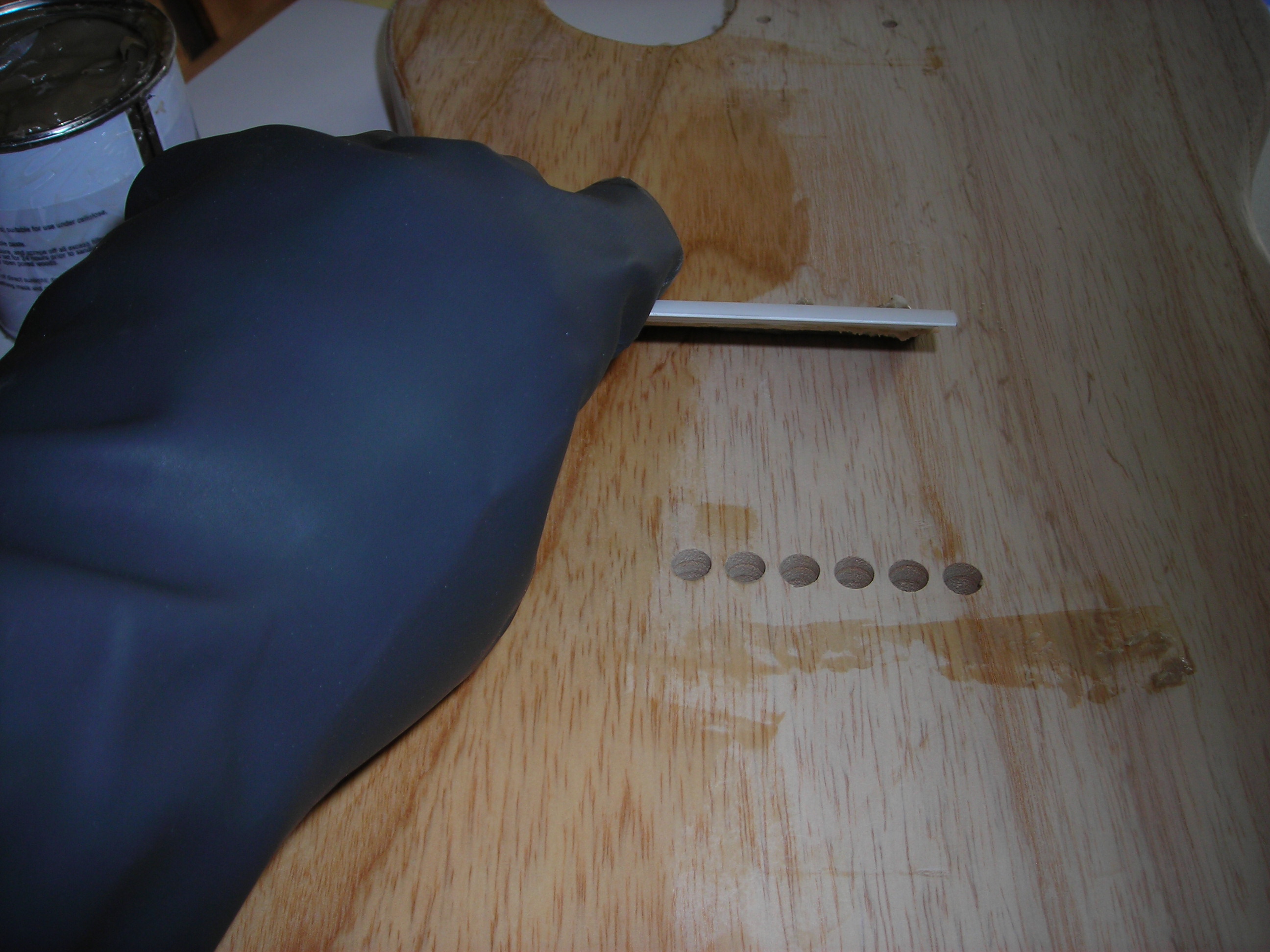 Grain_Fill_2 by stratamania, on Flickr
Grain_Fill_2 by stratamania, on Flickr
All applied along the direction of the grain, front, back and sides.
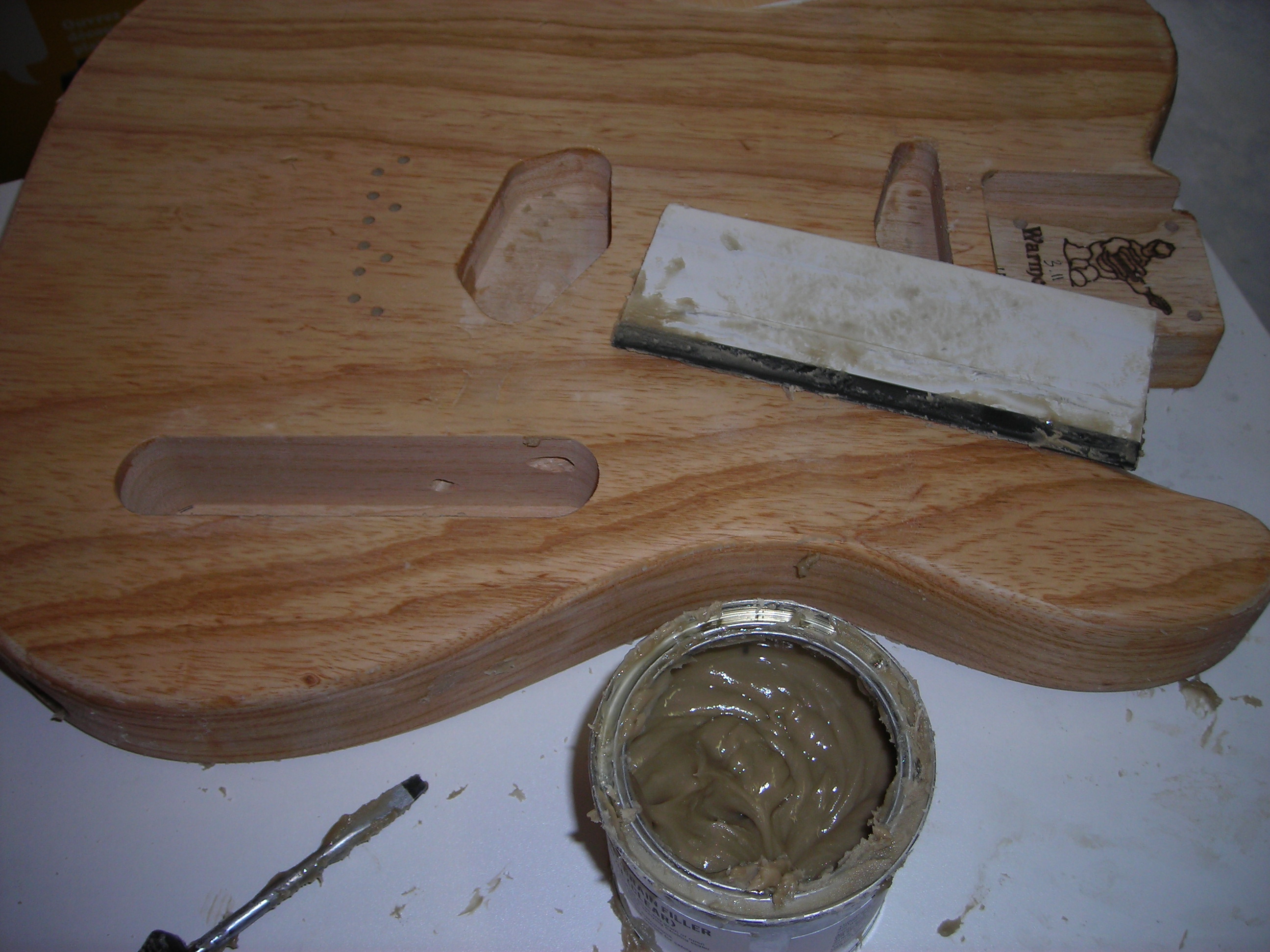 Grain_Fill_3 by stratamania, on Flickr
Grain_Fill_3 by stratamania, on Flickr
Leave it to dry about half an hour. Which gives me some time to go and have a cup of Tea.
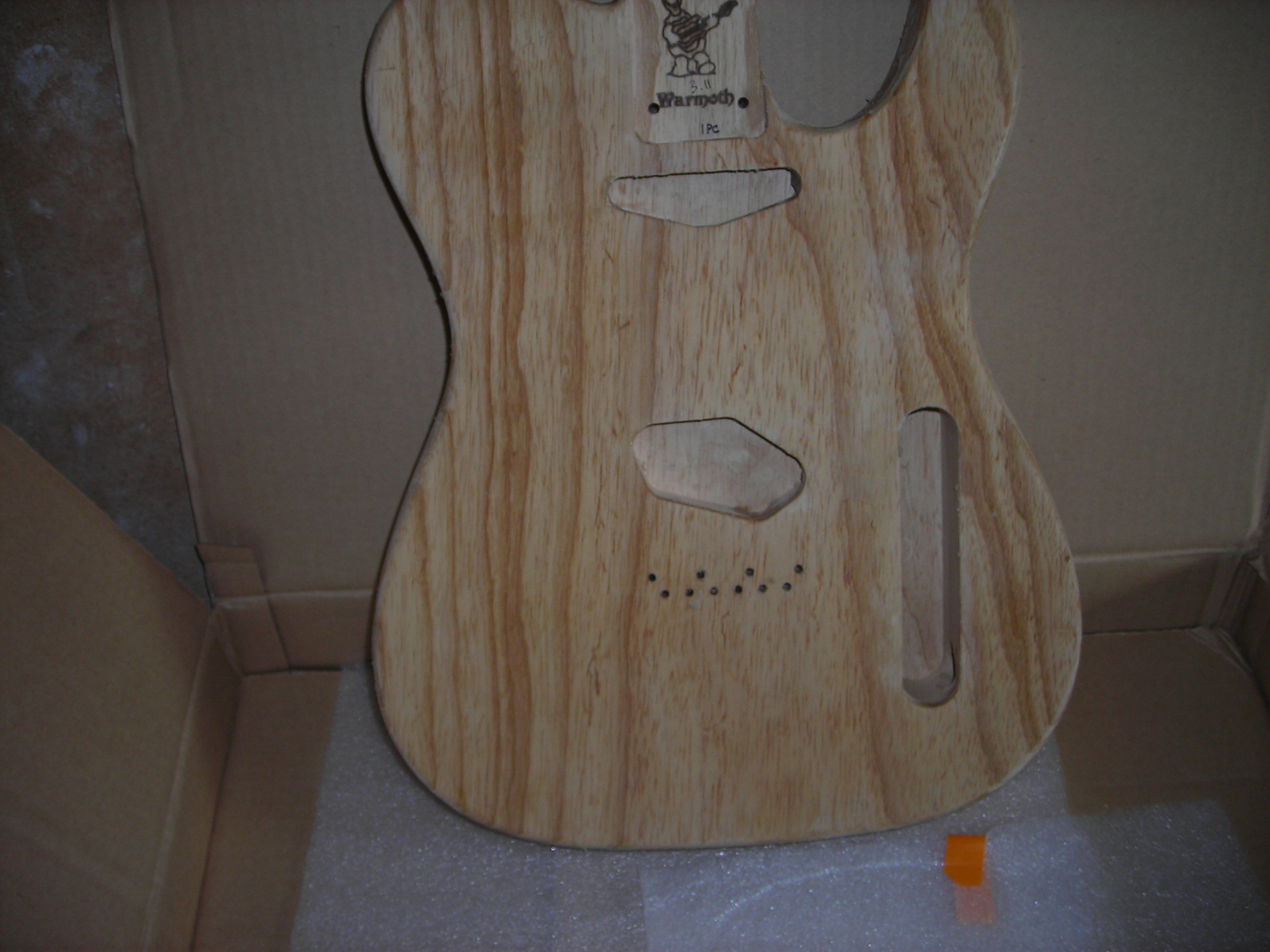 Grain_Fill_4 by stratamania, on Flickr
Grain_Fill_4 by stratamania, on Flickr
After returning from tea, I used the non-rubber side of the spreader to go across the grain to scrape off any access. I also used an old small screwdriver to poke out any of the filler that had made its way into screw holes etc. You go across the grain in this case as you don't want to pull the filler out of the grain.
Here it is after going across the grain to scrape off any excess. It will mean a little less sanding tomorrow. Now it's left to dry for 24 Hours. I may need to grain fill again but will see what it's like tomorrow.
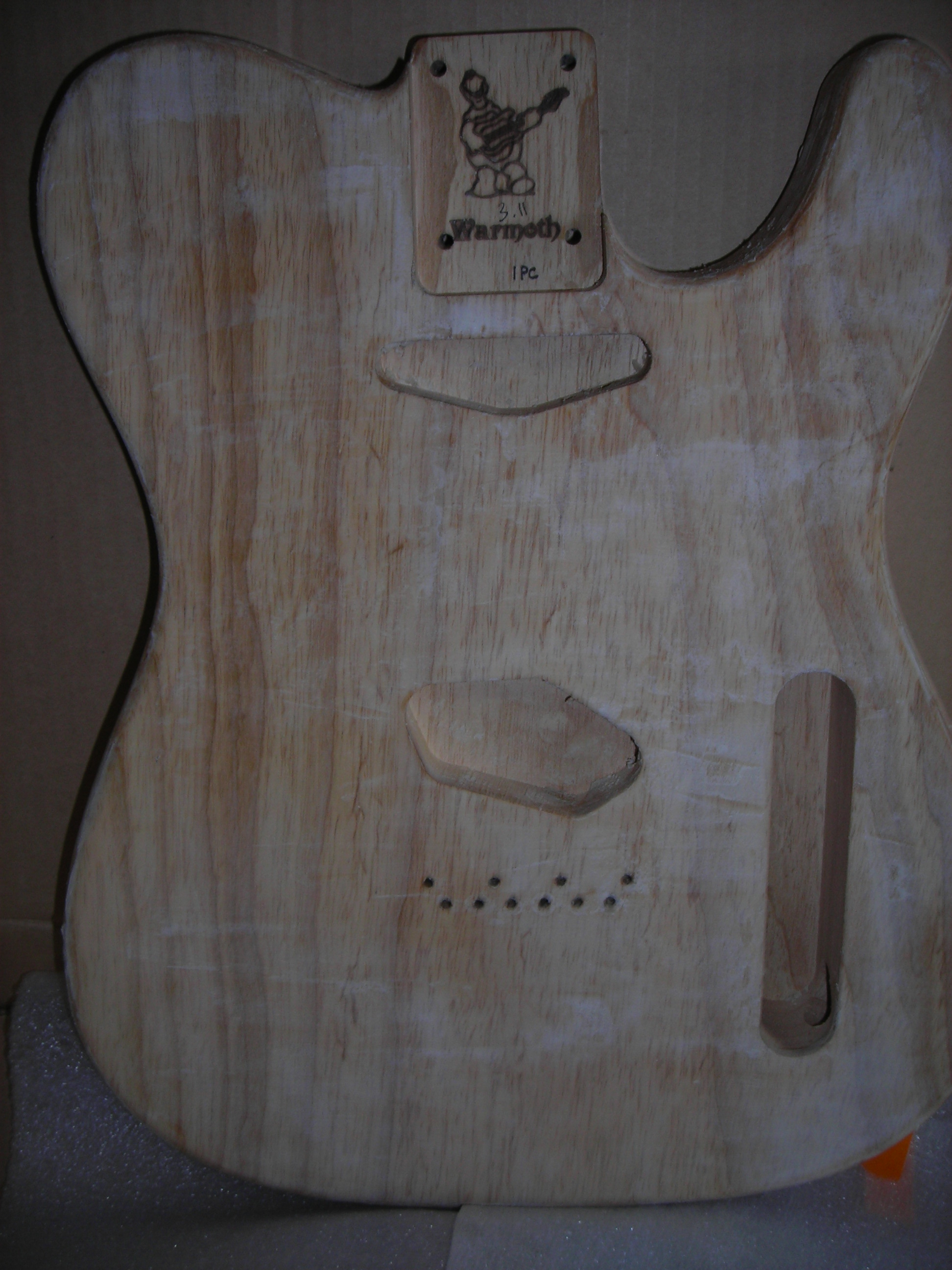 Grain_Fill_5 by stratamania, on Flickr
Grain_Fill_5 by stratamania, on Flickr
I cleaned up the tools with an old cloth and the previously mentioned white spirit. But here is a shot of the gloves, I work pretty carefully but this stuff will get where you don't want it. You really don't want this on your skin.
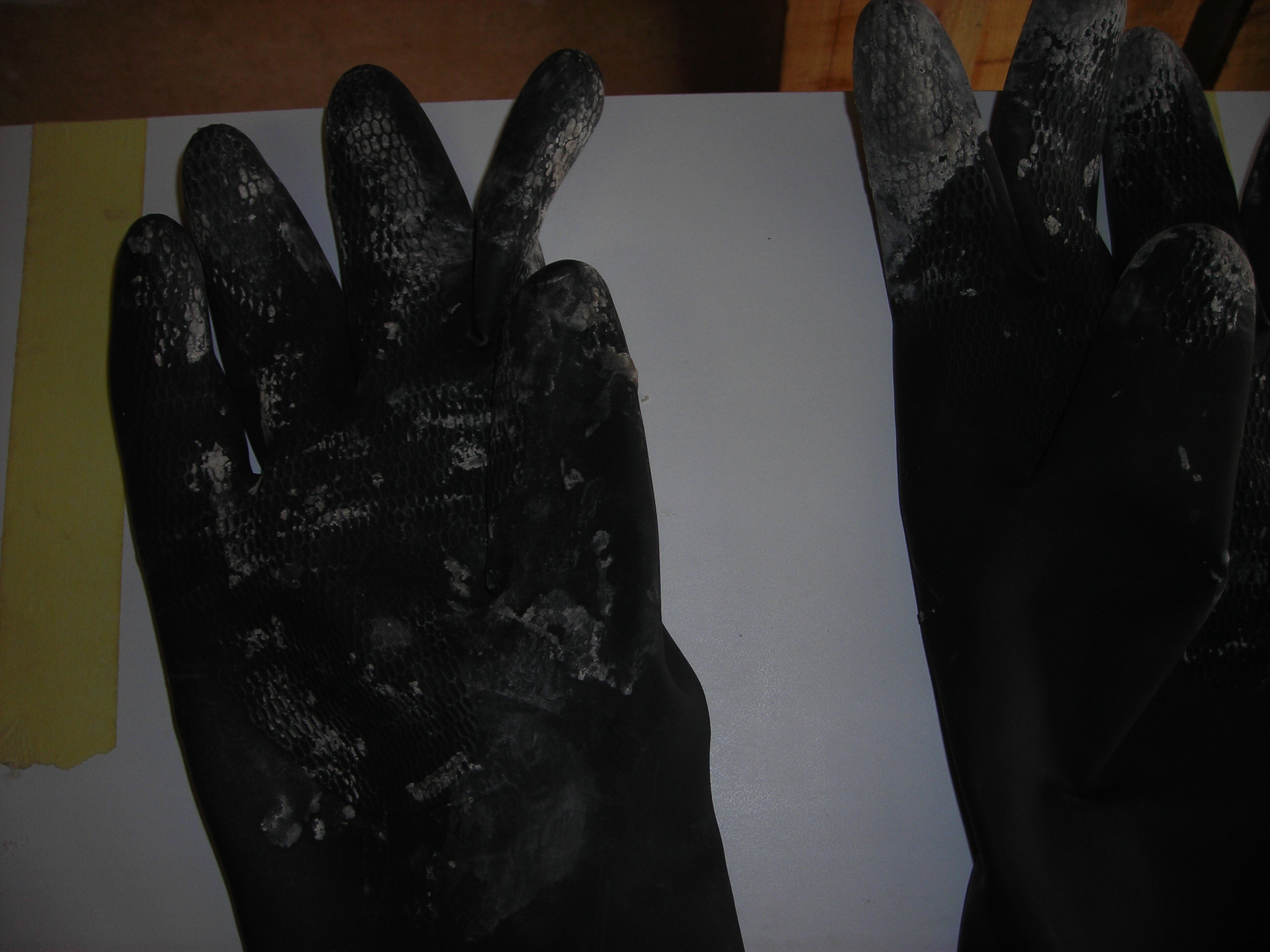 Grain_Fill_6 by stratamania, on Flickr
Grain_Fill_6 by stratamania, on Flickr
That's all for now, thanks for looking etc and feedback or questions are always welcome.
Here is the out of the box thread for reference... https://unofficialwarmoth.com/threads/time-for-tea.23713/
First up is grain filling. Just prior to that I gave the body a quick once over with some 320 grit, for the most part it was already fine so did not need much work out of the box.
I have moved my workmate out to the garage as the weather now is OK for the most part for finish type work and also I need the air and don't want the stink in the living quarters.
Here's the tele body on a piece of wood left over from a kitchen cabinet taped to the workmate to give a surface to work on.
 Grain_Fill_1 by stratamania, on Flickr
Grain_Fill_1 by stratamania, on FlickrFinishing products were obtained from Rothko and Frost in the UK. Behlens were out of stock of some items when I went to order so I thought I would try R & Fs offerings.
Applying the thixotropic natural grain filler. Note the use of heavy duty rubber gloves. I also used a breathing filter mask thing. This stuff is not what you want in your lungs or all over your hands. Also advisable to work in a well ventilated area.
You stir it (the grain filler) to a creamy consistency and if needed it can be thinned with White spirit (alternate names: turpentine substitute or mineral spirit ) I didn't need to thin it but just gave it a good stir. You then apply it with a spreader type of tool, probably a shower type squeegee would do. I used an old screwdriver to get it out of the tin and then spread it with the grain to force it into the pores of the Ash. You go with the grain in order to force the filler into the open pores.
 Grain_Fill_2 by stratamania, on Flickr
Grain_Fill_2 by stratamania, on FlickrAll applied along the direction of the grain, front, back and sides.
 Grain_Fill_3 by stratamania, on Flickr
Grain_Fill_3 by stratamania, on FlickrLeave it to dry about half an hour. Which gives me some time to go and have a cup of Tea.
 Grain_Fill_4 by stratamania, on Flickr
Grain_Fill_4 by stratamania, on FlickrAfter returning from tea, I used the non-rubber side of the spreader to go across the grain to scrape off any access. I also used an old small screwdriver to poke out any of the filler that had made its way into screw holes etc. You go across the grain in this case as you don't want to pull the filler out of the grain.
Here it is after going across the grain to scrape off any excess. It will mean a little less sanding tomorrow. Now it's left to dry for 24 Hours. I may need to grain fill again but will see what it's like tomorrow.
 Grain_Fill_5 by stratamania, on Flickr
Grain_Fill_5 by stratamania, on FlickrI cleaned up the tools with an old cloth and the previously mentioned white spirit. But here is a shot of the gloves, I work pretty carefully but this stuff will get where you don't want it. You really don't want this on your skin.
 Grain_Fill_6 by stratamania, on Flickr
Grain_Fill_6 by stratamania, on FlickrThat's all for now, thanks for looking etc and feedback or questions are always welcome.
Last edited:



